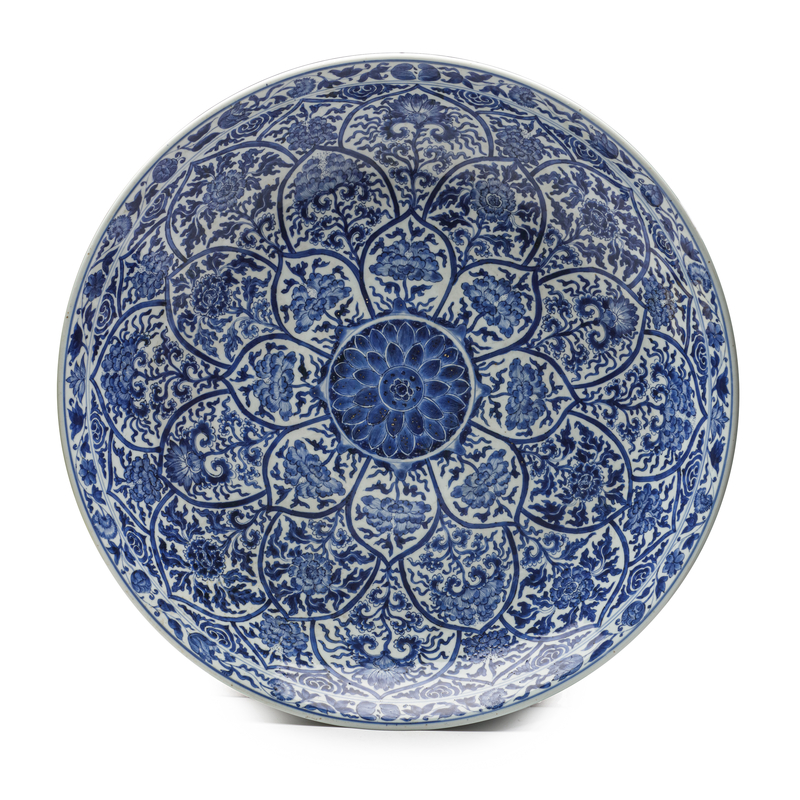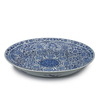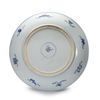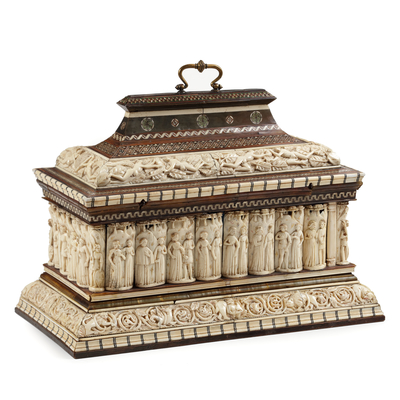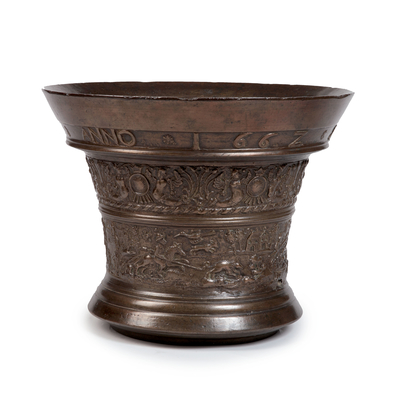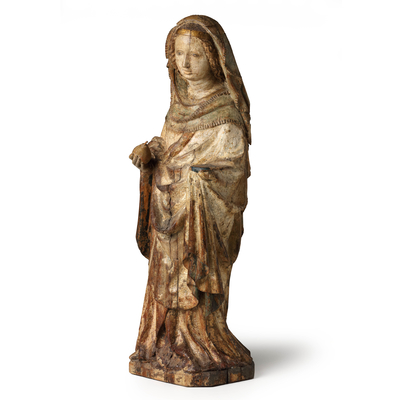Blue and white dish with lotus design
Global shipping available
- Origin
- China
- Period
- Kangxi Period, 1662 - 1722
- Material
- Porcelain
- Diameter
- 51 cm
Questions about this object?
Please use one of the contact options below:
Description
The interior of this blue and white Kangxi porcelain dish is decorated with an intricate lotus design. On the exterior of the dish are the Eight Treasures, marked with a ruyi or fungus symbol within the double footrim. This dish is made in Jingdezhen for the Persian market and safavid ceramics with similar designs are known.
The lotus is a special flower in Buddhist symbolism; it represents purity of the body, mind, and speech, as if floating above the murky waters of material attachment and physical desire. According to legend, Buddha’s first steps made lotus flowers appear everywhere he walked.
On the exterior of the dish are the Eight Treasures with a ribbon depicted, also known as the Eight Precious Things, or babao in Chinese. The Treasures are auspicious symbols of good fortune. They often occur as a complete or partial set as decoration on ceramics from the Yuan dynasty and on. Sometimes they are combined with other motifs, or occur individually as porcelain base marks. The Eight Treasures depicted are:
- Jewel or pearl - symbolising the granting of wishes.
- Cash coin - emblem of wealth.
- Open lozenge - used in ancient times to ornament a headdress. Sometimes depicted as the Fan Sheng, the double lozenges, as a symbol of victory.
- Pair of books - symbol of learning and used to ward off evil spirits. It is sometimes depicted as a painting, as a symbol of the fine arts and culture and one of the Four Sings of the Scholar.
- Mirror (solid lozenge) - counteracts evil influences and promotes unbroken conjugal happiness.
- Qin (musical stone gong) - a ministerial emblem, a symbol of felicity and just life.
- Pair of rhinoceros horns - represents happiness.
- Artemisia leaf - wards off sickness, is a symbol of felicity and has healing properties.
This dish of Kangxi blue and white porcelain was produced in China during the reign of the Emperor Kangxi (1662 - 1722). The most beautiful examples of Kangxi blue and white porcelain rival any other Chinese blue and white porcelain produced during earlier periods. Kangxi blue and white porcelain features delicate and refined designs, inspired by all the periods that went before. These designs are combined with great technical expertise to produce high quality porcelain with a brilliant under-glaze sapphire blue for the painting and a fine white slightly bluish silky glaze applied to a very white body.
